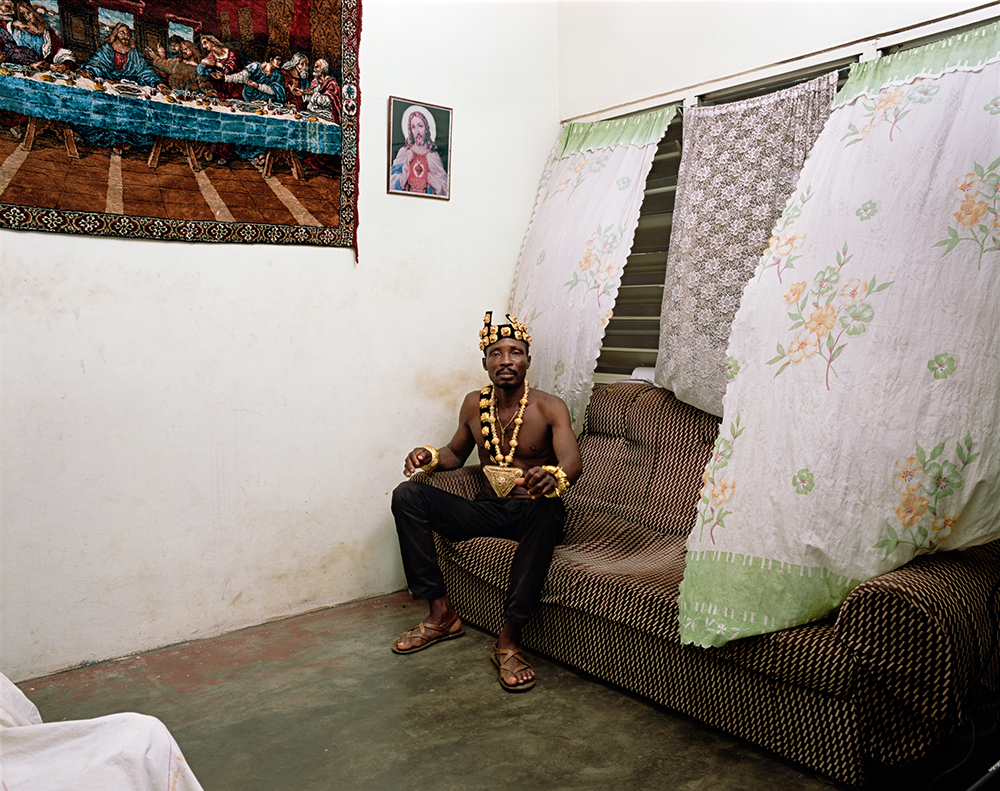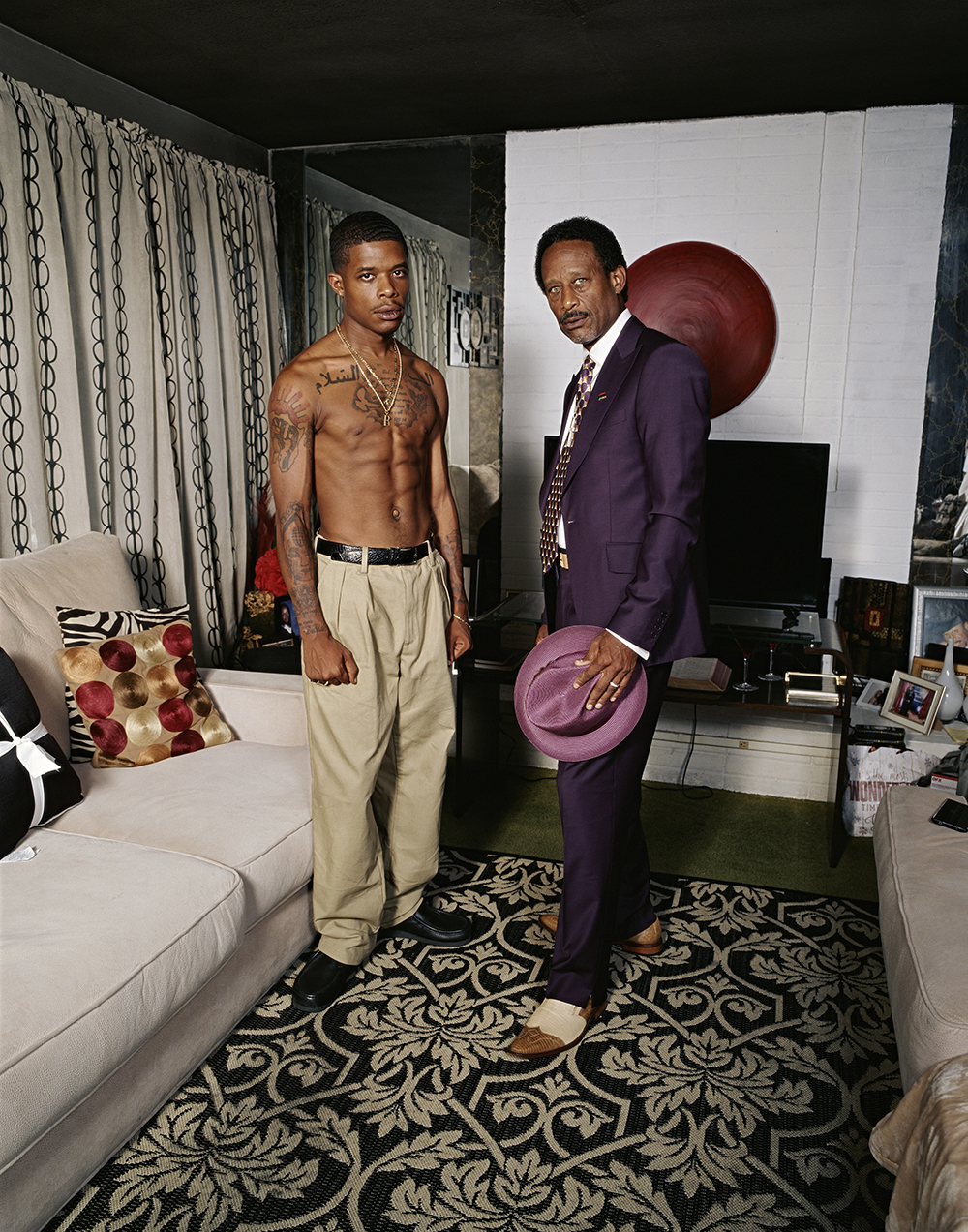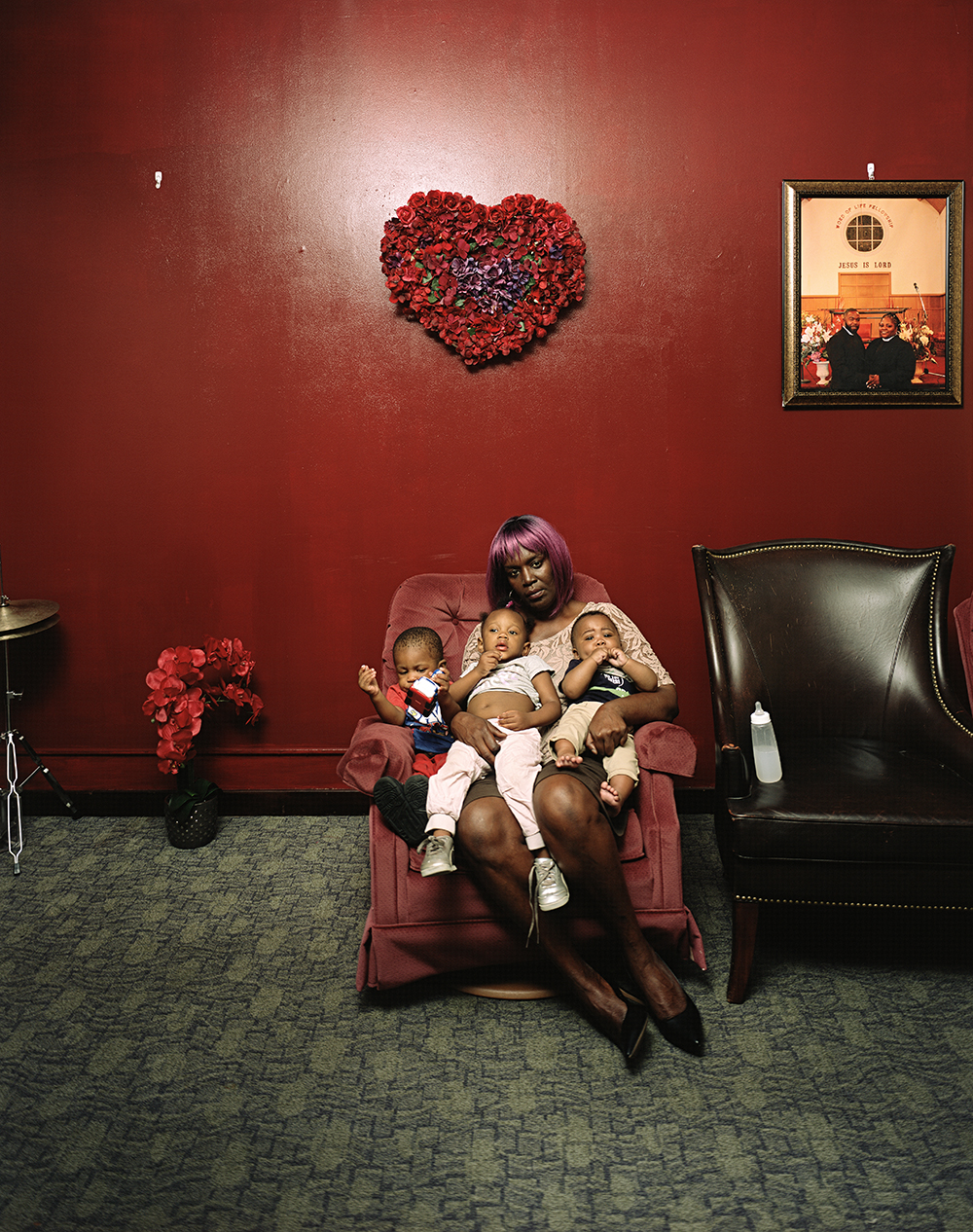
Chief © Deana Lawson. Courtesy of the artist and Guggenheim
Woman photographer and The Hugo Boss Prize 2020 winner Deana Lawson is on display at the Guggenheim
In thermodynamics, the word ‘centropy’ describes how the electrification of matter leads to regeneration and harmonious order. Contemporary Heroine and The Hugo Boss Prize 2020 winner Deana Lawson’s exhibition, titled Centropy, borrows from this idea, considering the socio-politically charged times we are living in, the sway they are having on our collective consciousness, as well as the actions we take, such as the widespread Black Lives Matter protests. Deana had previously displayed her images in June, 2020 at Kunsthalle Basel in Switzerland, a few weeks after the murder of George Floyd in the United States on May 25, 2020. In the words of Brit Barton, ‘a tidal wave of heartbreak, political action, and self-examination ensued.’
Deana’s subject matter is the Black diaspora, mostly captured in an everyday domestic setting. She photographs men and women of varying ages and relationships to each other such as couples, parents with their children, and grandparents with their grandchildren. Some of her portraits also comprise nude or topless sitters. The common factor in all these images is that the sitters are defiantly looking into the camera, matching their gaze with the audience, the power dynamic firmly on the sitters’ side. Each of her images is rich in terms of colour, light, and décor, with ample attention given to details such as the purple wig of the sitter in ‘Young Grandmother’, and the milk bottle beside her.
Her sitters are usually strangers whom Deana feels compelled to photograph because she feels like she has known them – in this life or in another. For Deana, the process of making a picture is tantamount to ‘being in communion or trying to access an unseen truth.’ This almost spiritual approach to image-making lends some of her pictures an element of the celestial or divine. Jenna Wortham elaborates on this aspect by referencing Deana’s image ‘Sons of Cush’. Jenna says, ‘on the wall in the image, you can see a whiteboard covered with branches of the biblical Noah’s family tree, drawn over a rough sketch of Africa, with arrows pointing to parts of the continent where chapters of the saga of the flood were said to have taken place. Perhaps, the image suggests, these are descendants of a holy lineage, and this child dressed in satin robes is, in fact, a tiny newborn king, sent to offer redemption. This portrait is capturing a second birth: celebration, singing and glory.’
The idea of the celestial is further highlighted by images of sublime natural phenomena such as galaxies and waterfalls, as can be seen in Taneisha’s Gravity where two picture frames of cascading waterfalls adorn the wall behind the two women sitting on the couch. Referencing this image, Brit Barton says that, ‘the resemblance is something of a simple landscape and a waterfall, but also point to paintings from the Hudson River School; a 19th-century movement based in New York state, which encapsulated the Romantic ideals of European colonization in the Americas.’ ‘Chief’ is slightly more obvious in its reference to the divine – the wall behind the sitter displays a framed picture of Jesus and a tapestry of The Last Supper, and the sitter is wearing what looks like a crown on his head, invoking the idea of Jesus being the supreme king of the world.

Barrington and Father © Deana Lawson. Courtesy of the artist and Guggenheim

Young Grandmother © Deana Lawson. Courtesy of the artist and Guggenheim
Whether or not viewers approach the exhibition with a spiritual mind, Deana’s intimate document of Black lives is a timely addition to continued discussion around representation – not least because the world is in the midst of a global pandemic that has had a disproportionate impact on African-Americans. As the pandemic throws a sharper spotlight onto the reality of inequality, Centropy – via a dignified, defiant, and almost theatrical representation of the Black diaspora – offers a crucial celebration of everyday Black experience.











